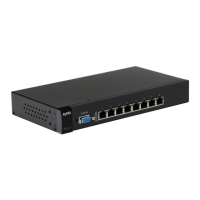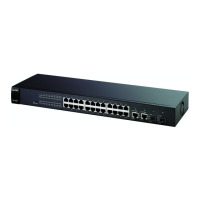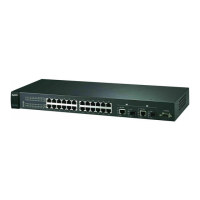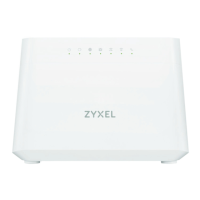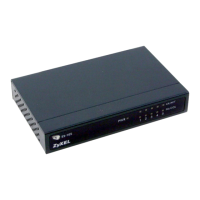Ethernet Switch CLI Reference Guide
275
CHAPTER 71
Static Route Commands
Use these commands to tell the Switch how to forward IP traffic. IP static routes are used by
layer-2 Switches to ensure they can respond to management stations not reachable via the
default gateway and to proactively send traffic, for example when sending SNMP traps or
conducting IP connectivity tests using ping.
Layer-3 Switches use static routes to forward traffic via gateways other than those defined as
the default gateway.
71.1 Command Summary
The following section lists the commands for this feature.
Table 153 ip route Command Summary
COMMAND DESCRIPTION M P
show ip route Displays the IP routing table. E 3
show ip route static Displays the static routes. E 3
ip route <ip> <mask> <next-hop-
ip> [metric <metric>] [name
<name>] [inactive]
Creates a static route. If the <ip> <mask> already exists,
the Switch deletes the existing route first. Optionally, also sets
the metric, sets the name, and/or deactivates the static route.
metric: 1-15
name: 1-10 English keyboard characters
Note: If the <next-hop-ip> is not directly
connected to the Switch, you must make
the static route inactive.
C13
no ip route <ip> <mask> Removes a specified static route. C 13
no ip route <ip> <mask> <next-
hop-ip>
Removes a specified static route. C 13
no ip route <ip> <mask> inactive Enables a specified static route. C 13
no ip route <ip> <mask> <next-
hop-ip> inactive
Enables a specified static route. C 13
